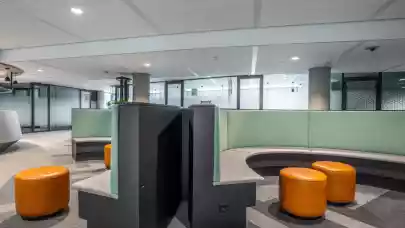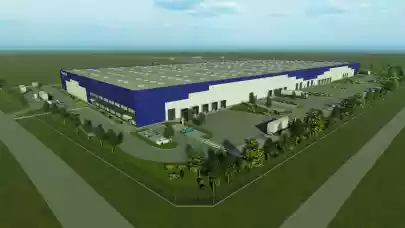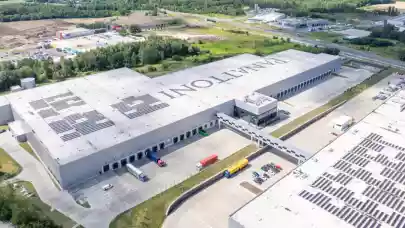
The Central and Eastern European region has achieved a significant improvement in its desirability as a logistics location. 8 sites from the region have successfully made it to the top 20 list of most popular European locations, which is a 100 percent increase since 2013. Prologis VP Laszlo Kemenes (MRICS) analysed the trends that shape the real-estate market in and around Budapest, and talked about the future projects of the company.
The Central and Eastern European region has achieved a significant improvement in its desirability as a logistics location. 8 sites from the region have successfully made it to the top 20 list of most popular European locations, which is a 100 percent increase since 2013. Prologis VP Laszlo Kemenes (MRICS) analysed the trends that shape the real-estate market in and around Budapest, and talked about the future projects of the company.
Prologis’ research paper on the most desirable logistics locations in Europe was published recently. What were the criteria that shaped the final list?
In partnership with Eyefortransport, we selected our pool of respondents from various industries both in 2013 and this year too. We asked more than 200 companies about their preferences when picking a suitable logistics and supply chain location. Markets and locations can be ranked by various criteria and the results show that the most valued asset of a majority of our respondents was labour availability. Proximity to customers was also a highly appreciated criterion, followed by costs related to the logistics location, i.e. labour and real estate costs, and certain miscellaneous costs like taxes and contributions.
How did the CEE region perform in this research?
Based on 2016 results we can say that the CEE region in general and Hungary in particular are the ultimate winners in this survey. Together with Hungary, several locations have managed to improve on their previous rankings. Our respondents highlighted 28 locations in CEE, with Central Poland as the most desirable location. Budapest ranked 5th, which is a significant improvement compared to 2013. In the top 100 European locations list, Budapest ranked 15th.

How did the neighbouring countries perform?
The only country in our neighbourhood that made it to the top 10 CEE market list is Romania, with 2 markets. The Bucharest region ranked 4th on the list, while the region covering the rest of the country got the 6th place. All respondents seem to have high expectations towards the Bucharest market and all companies with an established presence in the region look forward to further improvements. Although Czech Republic is not a neighbouring country it is important to note that Prague improved its score in the region significantly. In the Top 100 of EU Prague reached the 11th position, and out of the 28 markets in CEE, Prague is ranked 3rd.
Prologis left the Romanian market just last year. Why did you do that?
This transaction was in-line with our investment strategy of aligning our portfolio with global markets. Bucharest was not one of those markets.
How do you think Prologis performed in 2015 and what will you do different in 2016?
Last year we leased 1.75 million square meters of logistics space in 5 CEE countries (Romania included). 256,000 square meters of this space was rented out in Hungary, which indicates a healthy balance within the region. Our occupancy rate in the region stood at remarkable 95.3%, whereas in Hungary it was even higher - 97.5%. Our development projects are under way, and in terms of acquisitions, with the purchase of M1 Park we managed to acquire nearly 70,000 square meters in Hungary. This transaction amounted to around 70 percent of all regional acquisitions last year. We were also awarded six BREEAM accreditations, one of which belongs to Prologis Park Budapest-Sziget DC6 in Hungary. All in all, I think we can agree that 2015 was a great year for us and we intend to keep up ¬- or hopefully even increase - the pace in 2016.
Have you got plans for any further acquisitions?
Acquisitions are not necessarily planned well ahead. It is more like finding a great opportunity to acquire a very well maintained and strategically located real estate at a competitive price, and then investigate our options in each and every case. However, with the current market improvement developments will become more feasible than previously to grow our portfolio.
What do you think will be the main trends to shape the domestic industrial property market in 2016?
There are multiple factors and I intend to focus on the game changers only. The development of the automotive industry has been a defining force of industrial estates in Budapest and the countryside alike. We should also not forget about the electronics industry and the booming e-commerce sector. Established and developing manufacturing companies and suppliers, together with the new joiners in the automotive and electronics sectors will influence the real estate market to a great extent. The e-commerce sector can also contribute significantly to the development of the industrial estate market. The signs of these trends gaining momentum are already visible in Europe now. The next few years will see their popularity rise here in Hungary too.
Have you seen any change in the development rates of these sectors? Did anything change in the past years?
Nothing in particular. E-commerce is probably the most dynamically developing sector. In case of the automotive and electronics industries we must not forget that it is not just the market operators and developers that compete against each other - the race is on among countries too. That means Hungary must compete with other countries for these operations, developments and investments. We are in competition with the neighbouring countries and sometimes we win, sometimes we lose. Out of the 28 markets in CEE Hungary ranks 3rd in the region in terms of labour costs and does quite well on the European stage too. This should not come as a surprise, though, since most companies focus on CEE due to the lower costs here. They are willing to sacrifice their proximity to their customers and suppliers to cut costs.
How do you think the main indicators will change in 2016?
I think the increase in demand that we have been experiencing in the past 18-24 months will continue. Occupancy is at all-time high in the market, just as it is in our portfolio: we have never had an occupancy rate of 97.5 percent before. The market vacancy rate was a bit over 10 percent recently but I think that by the end of next quarter it will drop below 10 percent. This will have an impact on rents, which are already on the rise. This trend will continue during 2016 and new developments are also expected. In the past two years 4-5 BTS projects were completed in the Hungarian market, amounting to a total new industrial space of approx. 50,000 square meters. In Hungary we have delivered a 7,600 square metre facility for DB Schenker and have currently another 8,200 square metres under construction for Fiege. This is not exactly the growth everybody expected in Hungary and it is still far from the pre-recession numbers However, it is a very clear indicator of where exactly the market stands at the moment. Demands are visible now, we can start new BTS projects, but when it comes to speculative facility developments, it is still an open question when each developer feels like it is now time to get moving.
How far do you think we are from this ‘time’?
Not too far.
Have you got any specific plans?
Well, we have plans but I cannot tell you too much about them. A project is currently under way in Hegyeshalom, where we are developing an 8,000 square meter logistics space for Fiege. The project is expected to conclude this May.



